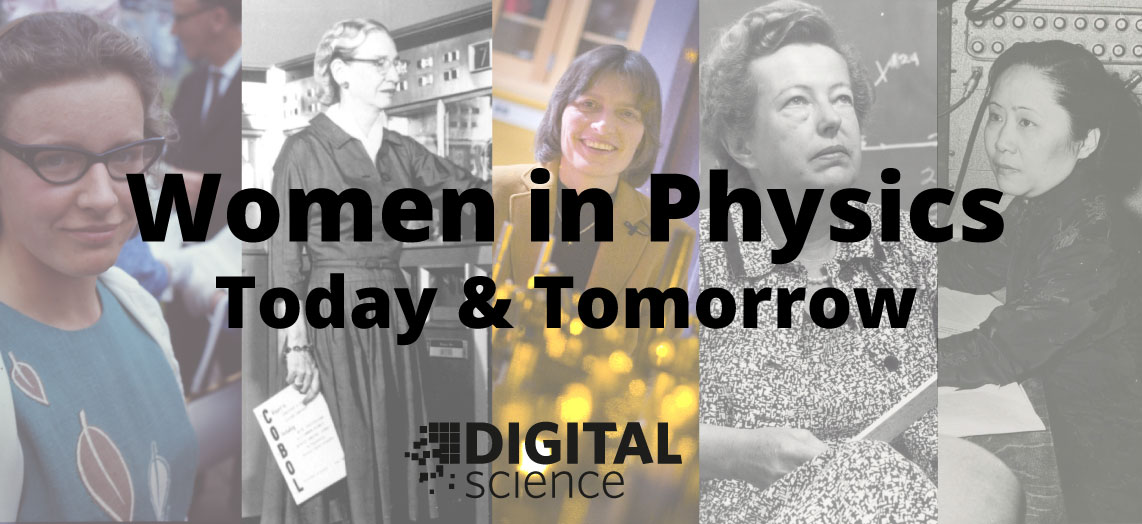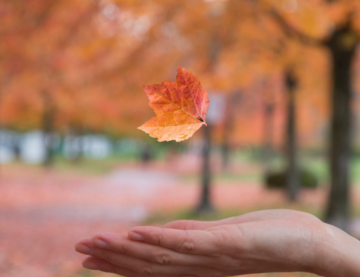Subscribe to our newsletter
Cultural Perception and Bias
The International Conference on Women in Physics (ICWIP) is a triennial meeting that looks to “understand the severe under-representation of women in physics and develop strategies to increase their participation in”. It does this in three ways:
- Showcase and celebrate scientific work in all areas of physics
- Develop resolutions to address gender issues and promote the participation of women in physics
- Provide networking opportunities to build a strong, diverse and inclusive worldwide physics community
Along with Barbara Gabrys at the University of Oxford, I was co-lead for the UK team, part of which involved coordinating a workshop discussing “Cultural Perception and Unconscious Bias”. I may be biased (;)) but I think it was one of the highlights of the conference program – a positive and exciting discussion about how we can make a real difference – using data and evidence, not random guesswork.
Each and every one of us believes that we are more fair and less prejudiced than the average person. We cannot always control what our brains do and, unconsciously, many of us are racist, sexist and biased without meaning to be. Workshop two featured four members of the UK physics community, Dr Emma Chapman, Dr Ruth Oulton, Jaimie Miller-Friedman and Jessica Rowson. Here, we looked to identify the instances of bias within society that are holding women back in their physics careers and find evidence-based ways to limit their damage. We were keen to identify the personality traits of successful researchers who have triumphed in a society not designed for people like them.
The Institute of Physics’ Improving Gender Balance project manager Jessica Rowson introduced the Institute’s research into girls in the physics classroom. For more than 25 years, there has been very little change in the proportion of girls studying physics post-16. Only around 20% of students progressing on to A-level are girls, despite similar success between the genders in previous qualifications in physics and science. The Improving Gender Balance project was launched in 2014, as part of the Stimulating Physics Network, funded by the Department for Education. The recruitment of students to A-Level does not only depend on their interest in the subject but their teacher’s support and encouragement. Whilst research has demonstrated that young boys and girls are equally as interested in science (ASPIREs, King’s College London[1]), the implicit biases of teachers and parents can hold girls back. An American investigation into the factors that affect the physical science career interest of female students echoes their work, “none of the women could produce any convincing stories illustrating the significance of role models in their lives”.[2] The dominance of boys in the classroom, unbalanced praise from teachers (boys for hard work, girls for neat work) and phrases like “boys will be boys” don’t help either.
Since the Girls in Physics work began (early 2000s) the Institute have made several interventions and produced several reports[3]:
- Improving Gender Balance – Reflections on the impact of interventions in schools(2017) Findings from the Improving Gender Balance and Drayson pilot projects and recommendations for good practice
- Improving Gender Balance – Results and recommendations from the IOP’s work in schools(2017) A summary of the Improving Gender Balance and Drayson pilot projects, ahead of the full report launch in March 2017
- Opening Doors: A guide to good practice in countering gender stereotyping in schools(2015) Case studies and key recommendations of how schools can explore equality issues across the whole school.
- Closing Doors: Exploring gender and subject choice in schools(2013) An exploration of national data on progression to A-level in selected subjects, including physics. The report draws attention to the gender imbalances that exist on A-level courses.
- It’s Different for Girls: The influence of schools(2012) uses data from the National Pupil Database to explore how uptake by girls onto A level physics courses varies in different types of schools.
- Girls into Physics: Action research(2009) is the evaluation report from our 2008 school-based action research programme, including recommendations for classroom practice.
- Girls in the Physics Classroom: A review of the research on girls’ participation in physics(2006) a summary of the existing research on girls’ participation in physics, highlighting common threads and suggesting effective strategies.
The results of IGB indicate that whole-school interventions work best in remedying gender inequality in subject choice. To make a significant difference to students’ perceptions, work needs to be done across the whole school to challenge gender stereotypes. Good practice in the science department with regards to taking girls on STEM trips and so on may be negated if gender lines are then enforced in other subjects, in break times, or in extracurricular activities. The main recommendations are below:
- Appoint a gender champion
For any issue to be taken seriously by a school, someone in the senior leadership team needs to be given responsibility for it, and for impressing the importance of it on the school.
- Train teachers
Teachers, like all of us, have unconscious biases, which can affect the experience of different groups in the classroom – what is said to students, feedback on their work, expectations of them and career suggestions.
Training can raise awareness of unconscious bias and its potential impact in the classroom, allowing teachers to reflect on their practice and adjust to ensure the best experience for all students. It can also help teachers deal with sexist and sexual comments or inappropriate behaviour.
- Use data and evidence
By comparing the progression in traditionally gendered subjects to the national average, schools can get an idea how their schools compare to the national average in terms of gender equality in subject choice. This can help identify areas for concern and provide incentives for action.
- Rethink science clubs
Science clubs are often quite boy-heavy, which can put interested girls off. Research projects such as CERN@school and Crest awards attract a better gender balance, as do science ambassador schemes – in which students are doing outreach with primary schools.
- Increase students’ awareness and engagement
Ask students to challenge their biases and the biases of others around them. Engage them in the issues and encourage them to think of ways to combat them.
Royal Astronomical Research Fellow Dr. Emma Chapman spoke about bias in institutional policy and promotion criteria “or just, how to change the system so that we can all just get on and do some science thank you very much”. Emma draws upon her own experiences, as a physicist, a woman and a mother, to uncover how bias embeds itself to harm minority groups. When she went on maternity leave during her PhD, she found she could no longer access library resources.
In 2012, Milkman et al revealed that being a white woman in America meant that you’re 12.5 % more likely to have your emails ignored on application to doctoral programmes compared to their male counterparts.[4] Being a black woman meant you were 29.8 % more likely to be ignored, an Indian woman 37.7 % and a Chinese woman 77.0 %. And if someone does respond, and you’re invited for interview, women are constantly ranked lower “in scientific competency, quality of proposed research and relevance of research”, and need on average three more high impact publications.[5]
To implement institutional change will be difficult and take time; encouraging unconscious bias training, language awareness, informal support networks. It seems strange that the most women dominated physics discipline, Astrophysics, is the one most plagued by stories of sexual harassment. Dr. Chapman puts this down to women who are empowered to ‘speak out’- there are enough of them now to find support. Victims, tired of keeping quiet, are calling out misconduct on Buzzfeed. But whilst the names of predator professors make the history books, the names of the young women are too easily forgotten. She is part of the 1752 group: a UK-based research and lobby organisation working to end staff-to-student sexual misconduct in higher education[6]. Later this year they will join forces with the NSS (the Natonal Student Survey) to collect data. Their strategic priorities are designed to protect those most vulnerable within academia;
- Implement an enforceable national code of conduct that clarifies professional boundaries. Address the issue of staff/student relationships directly within institutions.
- Develop a reporting and complaints process for sexual misconduct/assault, which is sensitive to race/gender identity/sexuality/ability/undisclosed mental health issues.
- Establish an independent national office for sexual misconduct advocacy and support, with specialist sexual misconduct advisors located within each institution.
- Ensure all institutions record data and make publicly available reports on all allegations of sexual misconduct.
- Address the long-term impact of staff sexual misconduct on those who experience it.
- Implement comprehensive sector-wide and institution-level cultural change.
EPSRC Quantum Technologies Fellow and Reader at Bristol University, Dr. Ruth Oulton spoke about a survey she has conducted investigating the perceptions of gender and bias within a European network of researchers, COST Action “Nanoscale Quantum Optics”. The most striking finding was the large disagreement between men and women about whether there is even a problem or not, the majority of men believe that women have equal opportunities for career advancement to men, whereas the majority of women disagree. She contrasted this to the vast amount of evidence that implicit bias exists, and that, given equal productivity, age and family status, women can be up to four times less likely to be promoted to Professor as their male colleagues. Dr. Oulton’s survey also found that most scientists, particularly the men, felt that to counteract gender bias the focus should be on activities focusing on women. Most sociological evidence shows, however, that focus on women only produces marginal results, whilst focusing on the very top decision makers in institutions is far more effective. Clearly, even though research exists that show that implicit bias and policy making has strongly negative effects on equality of opportunity for women in science, male scientists, including those at the very top are unaware of this research.
Dr. Oulton discussed interventions she was making in her own scientific community to inform and engage both men and women on these issues. She emphasized the need to involve men at all levels, but particularly senior men, the so-called “gate keepers”. In particular what is needed is enthusiastic buy-in from men and women at all levels, rather than imposing change without consensus. The first step is to ensure that members of the scientific community are given ample statistical evidence of implicit bias and gender inequality: as scientists, they are likely to question individual anecdotes, but are more likely to take seriously scientific reports – in the COST action Dr. Oulton found that as soon as published evidence was presented to the community they were far more willing to view interventions as necessary. The second step is to enable discussions in a safe non-judgmental environment. Techniques such as dividing the discussion space by gender allows equal voice to both men and women when discussing these difficult subjects. Bringing the groups together allows the audience to hear what the differences in opinion are, ensures that an individual opinion may be expressed without the individual being identified, and eventually allows the men and women to understand each other better. Dr. Oulton will conduct a final survey at the end of the four year COST Action to gauge whether these interventions have improved the understanding of gender inequality in science, its causes, its effects and what interventions work.
Jaimie Miller-Friedman’s research is not focused on ‘leaky pipelines’ or ‘gender scissors’, but a study into the pathways to success of British women in physics and biology. Instead of endless ‘gender surveys’ looking to tally the number of women at various academic levels, Jaimie identified generational differences in the personality traits of high achieving women. All scientists experienced professional isolation and responded by taking on ‘masculine’ identities. They all began their interviews by listing their achievements; from school grades to university degrees, and stating explicitly how they were different to the girly girls. For mid-to-late career academics, positive discrimination was crucial for them to gain their first position, whereas this wasn’t needed for early-to-mid researchers. Early-to-mid career researchers were very aware of their own biases and careful with gendered language, whereas the stereotypes were more ingrained within mid-to-late career researchers. Comparing biology to physics; women in life sciences suffered far fewer barriers in the early career, then have major confidence crashes during career breaks.
The Q&A session was lively and engaging. Sexual misconduct and harassment can be confronted through national awareness campaigns, independent officers and community champions. For those who observe instances of bias, it is crucial not to assume someone else is doing something about it. In research and academia, codes of conduct should be developed for groups and conferences to increase the visibility of women.[7] Minds will be changed through data collection and analysis. By identifying the characteristics that create successful women in science, we can train and support the scientists of the future.
Jess is a post-doctoral researcher in the Department of Physics and Centre for Plastic Electronics at Imperial College London, where she makes circularly polarised organic light emitting diodes. Throughout her career in research she has been involved in projects to support gender inclusion in science. Jess works with the Institute for Research in Schools and Institute of Physics to try and support teachers and students across the country. @jesswade (I can give you more)
Jessica Rowson’s slides are available here: https://goo.gl/gKr45J
Dr. Emma Chapman’s slides are available here: https://goo.gl/P9ocYh
Dr. Ruth Oulton’s slides are available here: https://goo.gl/WpxFNY, poster here: https://goo.gl/nRKwGE
Jaimie Miller-Friedman’s slides are available here: https://goo.gl/LgHuRk
[1] https://www.kcl.ac.uk/sspp/departments/education/research/ASPIRES/Index.aspx
[2] https://journals.aps.org/prper/pdf/10.1103/PhysRevSTPER.9.020115
[3] http://www.iop.org/education/teacher/support/girls_physics/reports-and-research/page_63816.html
[4] http://dx.doi.org/10.2139/ssrn.2063742
[5] http://dx.doi.org/10.1038/387341a0
[7] https://www.sfpnet.fr/uploads/tinymce/PDF/Gender%20Fairness_6juin2017.pdf




